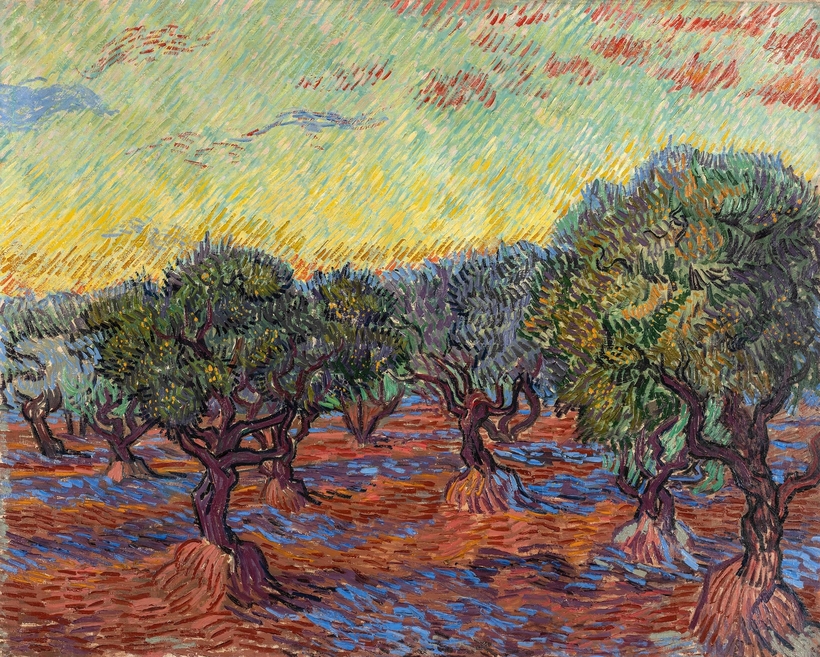In the snowy February of 1888, Vincent van Gogh, in search of respite, moved south from Paris to Arles, eventually renting a house—now known as “the Yellow House”—with a vision of establishing an artists’ retreat. Paul Gauguin came to stay in October of that year, but left in late December when a blazing row erupted and Van Gogh broke down, infamously severing his left ear. After five more months of repeated psychosis and hospitalization, the Dutch artist, in May 1889, admitted himself to an asylum in nearby Saint-Rémy-de-Provence, where he stayed until the following May, prone to episodes that drove him to eat paint.
Opening today, and marking the bicentenary of London’s National Gallery, “Van Gogh: Poets and Lovers” brings together more than 50 works that tell the story of the artist’s most explosive period, those 27 months in the South of France.

Despite the turbulence of that time—or perhaps because of it—Van Gogh’s output matured to uncharted heights of expressiveness and originality. A symphony of tone and texture, his pictures fused agitated brushwork with great globs of intense color. Flicks became strokes, then curls, and finally great loops of paint. Some of the images he created at this point are among the most recognizable in modern art: Starry Night over the Rhône; A Wheatfield, with Cypresses; The Yellow House; Van Gogh’s Chair; and The Bedroom—all of which are in the show.
Here as well are two of his seven paintings of sunflowers in a vase. One with a blue background has been lent by the Philadelphia Museum of Art. The other, on yellow, is the biggest attraction in the National Gallery’s own permanent collection. They’ve been reunited for the first time since leaving the artist’s studio in 1889, and they bookend the M.F.A. Boston’s portrait Lullaby: Madame Augustine Roulin Rocking a Cradle (La Berceuse), forming a triptych that Van Gogh originally designed for a “little shop window” in Paris.
“You must know, too, that if you put them in this order,” Van Gogh wrote to his brother, Theo, describing the intended display, “then the yellow and orange tones of the head take on more brilliance through the proximity of the yellow shutters.”

It’s this attention to detail that the National Gallery hopes to impress upon visitors. While many think of Van Gogh’s work as the painterly ramblings of a madman, every lick of paint was carefully considered to impart a particular effect upon the viewer, and thoughtfully executed. He was, in fact, meticulous.
The exhibition’s title—“Poets and Lovers”—draws on the ways in which Van Gogh turned to the two topics during these affecting years. In Arles, he envisaged the park opposite his home as a hangout for Renaissance poets such as Petrarch and Boccaccio. And he began to see the overgrown hospital gardens in Saint-Rémy as a refuge for imagined lovers. The title also points to the despair he felt at the constant breakdown of his relationships with others, as well as to the lack of diverse subject matter on hand, due to his supervised confinement.

The show’s focus ends on May 16, 1890, when the painter left Provence for Auvers-sur-Oise, in the north. There, on July 27, 1890, in a wheat field, Van Gogh, aged 37, shot himself in the chest. Two days later, he spoke his last words: “The sadness will last forever.” Why not cover these 10 weeks? Because they are a different chapter of Van Gogh’s life and career—a frenzied period, covered in an exhibition at the Musée d’Orsay last winter, when he edged closer to abstraction.
“Van Gogh: Poets and Lovers” is on at the National Gallery, in London, until January 19, 2025
Harry Seymour is a London-based art historian and writer


